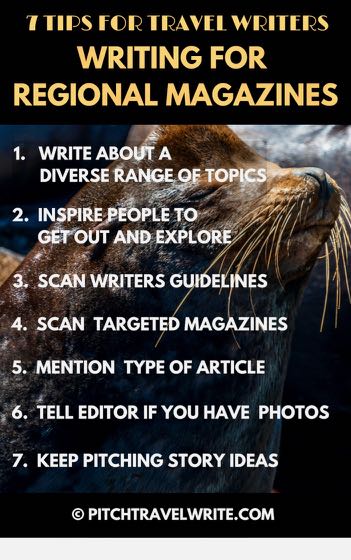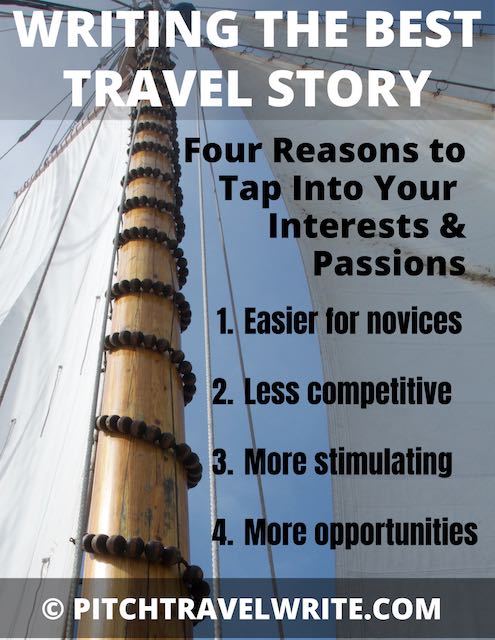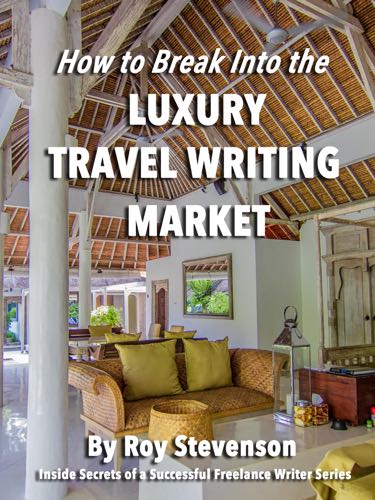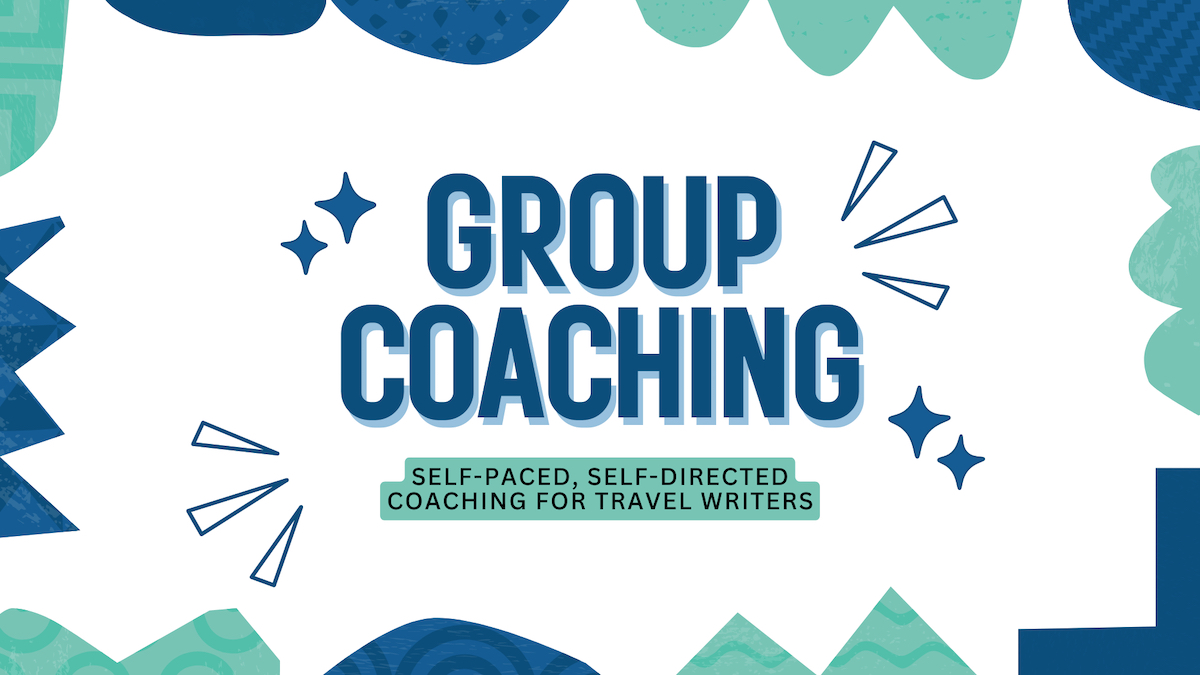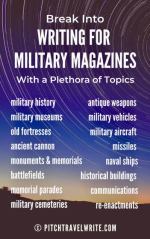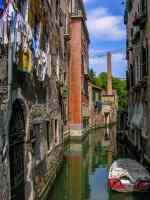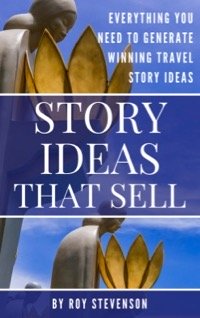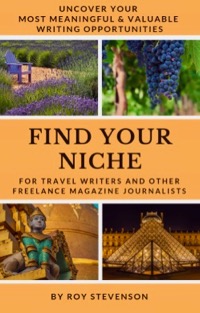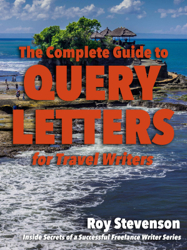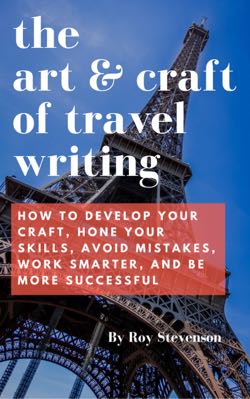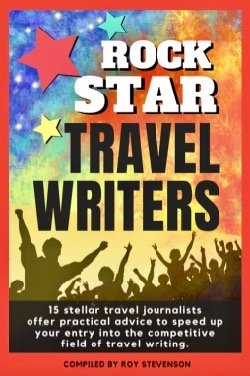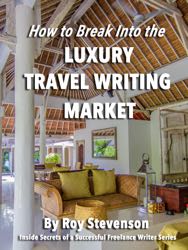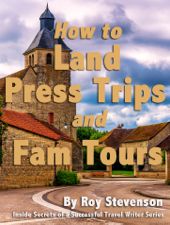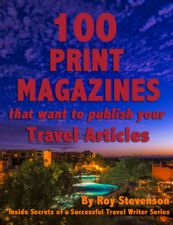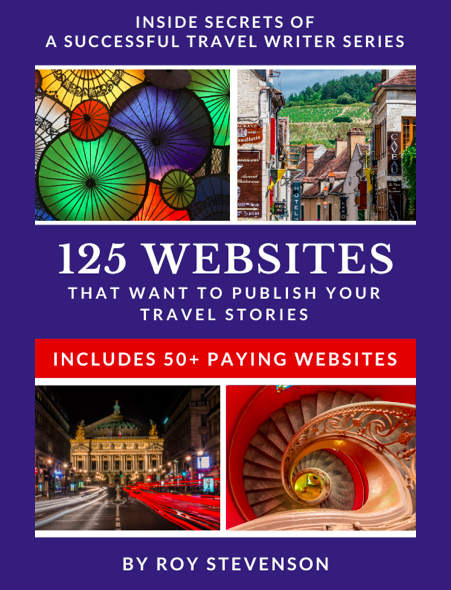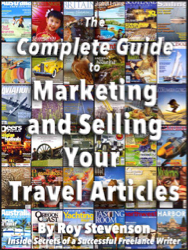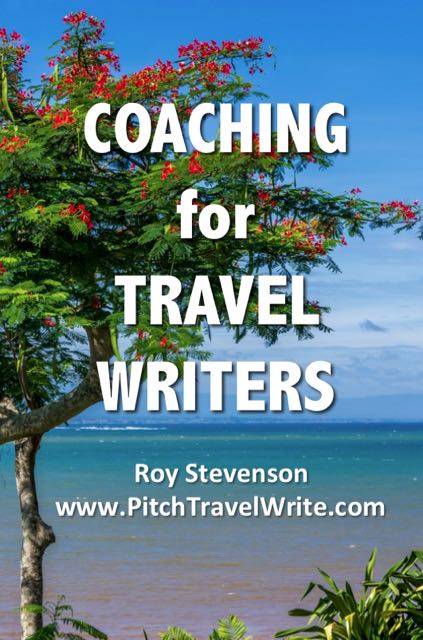- Home
- Types of Travel Stories
Types of Travel Stories
to Help You Find Your Niche
By Roy Stevenson
The beauty of travel writing is that you can write an article about
almost every aspect of your travels and find a home for it somewhere.
This page will give you some idea of the types of travel stories you can
write and sell. It will also give you an idea of some of the
terminology used in the travel writing industry.
There are some
common themes for travel articles. For example, some travel articles that focus
on "the best" that a place has to offer, and other travel stories are based on specific areas of interest. This might include things like luxury travel, adventure travel, beer and wine, just to name a few.
Additionally, you can develop a list of writing genres unique to your own areas of interest.
Expanding your writing genres has a lot of benefits.
Common Themes for Travel Stories
One of the most common types of travel stories is known as a "roundup".
The standard travel roundup piece gives an overview of a place and a brief insight into each of the attractions it has to offer. Researching these stories will keep you busy because you’ll be squeezing a visit to all of the attractions a place has to offer in a very short time.
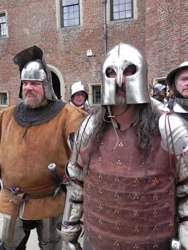
Many magazines snap up stories about unusual attractions.
I once submitted a story about the mysterious Oregon Vortex at
Gold Hill, Oregon, to a magazine. In this place the bizarre is
commonplace: people change height in relation to each other as they
walk along a piece of wood set into the ground, a broom stands up by
itself in an old mining hut, gravity feels stronger in some parts of the
Vortex and pulls you around, golf balls appear to run uphill, and other
strange things. This is an unusual attraction story.
Weekend Getaways
stories are very popular in urban and regional travel and lifestyle
magazines. These are usually about places within a few hours’ drive of
home.
Bed & Breakfast
review articles find homes in upscale travel and lifestyle magazines,
for an audience that enjoys luxury travel and peaceful surroundings. Many B&B's are upscale and qualify as luxury travel. If you want to know how I got into this well-pampered niche, you can read my story and the steps you can take to get started in luxury travel writing.
Art and Architecture stories
describe some of the most notable buildings in a city or town and
describe their history and decoration. Many stories have been written
about the influence of Spanish artist Gaudi in Barcelona for example,
and many stories have been written about Frank Lloyd Wright’s designs
and interiors. I recently wrote a story about the large number of
beautifully restored Victorian homes in Port Angeles, Washington.
Historical Account
articles tell about a place and what it looks like today. I have
written a number of these stories, a recent one being in International
Living magazine about the re-enactment of the Battle of Tewkesbury, at
this small town’s annual medieval fair. I wrote a separate article about writing historical travel articles.
Eco-Tourism
has become a popular topic and your story does not even have to be
completely about a green resort or attraction. It could touch on a
resort that uses sustainable practices to preserve the environment. And
it could be part of a roundup article.
Festivals and Special Events are a favorite topic for travel writers because they're fun and exciting. But not all festivals and special events are unique enough to interest editors. Here's some advice about how to pitch these interesting and fun stories...
When To Go
articles tell the reader the best time to visit a place to avoid the
crowds and harsh weather. For example, many writers describe a city in
Europe in the shoulder seasons (spring or fall) when the summer tourist
rush had receded.
Getting There and Getting Around
stories tell a reader how to travel to a place, and what transport is
available once they are there. Such articles describe airlines that fly
to the destination, how to get from the airport to the city without
being ripped off by overpriced taxis, and how to use the subways, trams,
and buses in the city. Such stories also tell about walking tours that
the reader can take to see the most important sights.
The "Best" Travel Stories
A best attraction
story focuses solely on a place’s top attraction and provides some
detail about it. For example, if you consider the Eiffel Tower to be
Paris’s main attraction, you would write about its history, what it
looks like today, and about your experience and the views when you went
up the tower.
A best tour story
covers an outstanding tour or activity that stands above all others in
the region. On a recent visit to San Francisco my audio guide tour of
Alcatraz prison and Island blew all the city’s other tourist attractions
away (and that’s hard to do in San Francisco!). Your story would
describe such a tour and what made it so outstanding.
Best eats
articles usually run as short front-of-the-book stories, and cover a
particular restaurant, food theme, or an area with a high concentration
of eating establishments. I have written brief 250-word restaurant
descriptions for Coast Food & Arts magazine, in which I described
the restaurants' flagship dishes, and their ambience and service.
Best shopping
stories are popular with women’s magazines and tell about your shopping
experience in one particular shop or mall, or a particular market.
Best lodgings
articles are always popular with travel magazine editors. I recently
finished a 15-day tour of the Pacific Northwest’s most rustic luxury
lodges for a regional travel magazine. My story described each lodge,
the rooms, the surroundings, its restaurants and spas, and the features
that made each lodge so unique. This is but one aspect of luxury travel.
Almost anything can become a
"best" travel story. Use your imagination - what are some of the best
things you've experienced when you travel? Thinking about these things will lead to luxury travel story ideas.
Travel Stories Unique to You
Another type of travel story focuses on your interests and passions. In my opinion - these are the best kinds of stories because you're writing about something you love, and traveling to a place where you would want to go anyway. And you can take it a step further with your own specialized writing genres. This is my favorite way to get published more often.
Try writing museum stories. That's one easy way to break into travel writing and earn money while you do it.
Another easy genre for freelance travel writers is writing for boating magazines and other nautical publications. If boating isn't your thing and living overseas is your thing, you can write for expat magazines. It's an easy niche for novices.
Instead of things that float, maybe things on wheels is more interesting to you. An overlooked niche is Writing about vehicles such as automobile museums. Since 2011 I've written 25 automobile museum articles - and got paid well for them!
And if fitness and health is your thing, you might want to check out my article about breaking into fitness magazines.
Surely you've got your own list of interests and passions -- use them to develop your own niches and genres.
More related articles that will interest you:
How to Dream Up Story Ideas that Sell
Travel Stories about the Luxury Niche
Expand Your Writing Genres: Five Ways to Write With Authority
If you want to break into writing about resorts, luxury hotels, villas and spas, my 12-chapter, 130-page manual, How To Break Into The Luxury Travel Writing Market tells you how to do it. It walks you through each step of the process. You’ll learn how to get luxury travel assignments and leverage them to land luxury travel trips. I’ve used these techniques to land assignments at dozens of the finest luxury resorts and spas in the world.
This manual contains an up-to-date list of 150+ print magazines and travel websites that publish luxury travel articles. It’s the most comprehensive list of luxury magazine outlets you’ll find ANYWHERE. Having immediate access to these lists alone is worth the price of the eBook, saving you hundreds of hours of research.

Roy Stevenson is a professional travel writer and the author of www.PitchTravelWrite.com. Over the past ten years, he’s had more than 1000 articles published in 200 magazines, trade and specialty journals, in-flights, on-boards, blogs and websites and has traveled on assignment around the U.S. and to dozens of international destinations.
IF YOU ENJOYED THIS POST, GET UPDATES. IT'S FREE.
